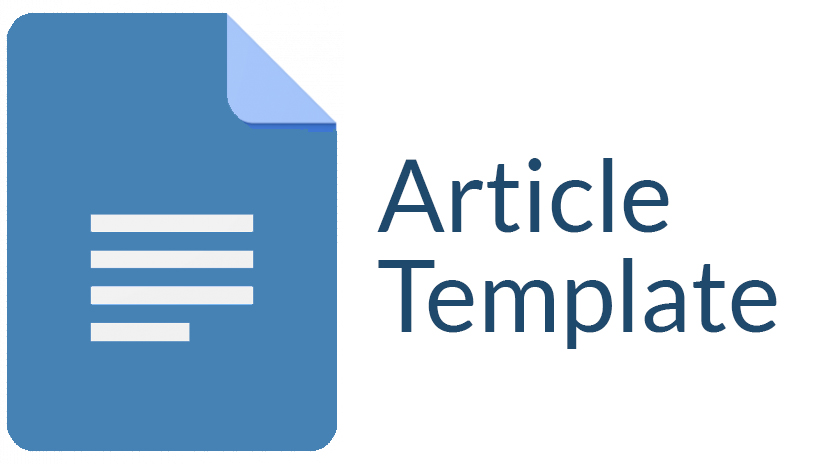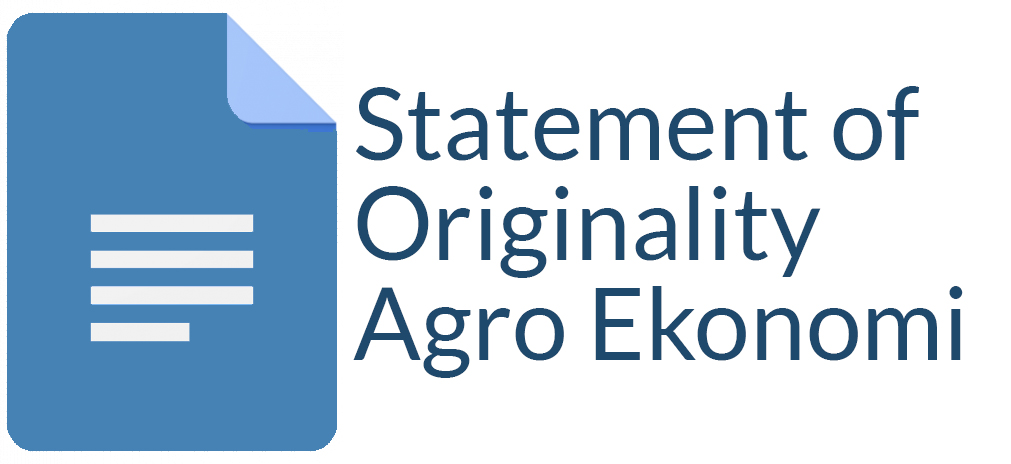The Application of Good Agriculture Practices(GAP) of Shallot in Bantul Regency
Suharni Suharni(1*), Lestari Rahayu Waluyati(2), Jamhari Jamhari(3)
(1) Ditjen Hortikultura, Kementerian Pertanian,Indonesia
(2) Master ofAgribussiness Management, Faculty ofAgriculture, Universitas Gadjah Mada
(3) Master ofAgribussiness Management, Faculty ofAgriculture, Universitas Gadjah Mada
(*) Corresponding Author
Abstract
Bantul Regency is one of the center of shallots in Indonesia, but its productivity is low. In 2015, the productivity of shallots in Bantul Regency was 7.66 tons/ha. The application of Good Agriculture Practices (GAP) is a form of technology adoption aiming to improve the shallot productivity.The purposes of this study are to determine the level of application of shallots GAP in Bantul Regency and to find out the factors influencing the application such as land area, farmers’ age, farmers’ education, farming experience, availability of farm inputs, and extension service frequency. Purposive technique was used to determine the research location. Sanden and Kretek districts were discovered since these areas are the production centers of shallots in Bantul Regency. The study involved the respondents consisting of sixty shallot farmers, thirty people from Kretek District and the other thirty people from Sanden District who were determined by simple random sampling. This research used scoring technique with Likert scale to measure the application level of GAP. Multiple linear regression analysis was used to understand the factors affecting the application of GAP of shallots. Result showed that the application of GAP of shallots in Bantul Regency is low. The factors of land area, farmers’ education, farming experience, and availability of farm inputs means infl uence the application level of GAP of shallots significantly.
Keywords
Full Text:
PDFReferences
Aldila, H. F., Fariyanti, A., Tinaprilla, N. 2015. Analisis profitabilitas usahatani bawang merah berdasarkan musim di tiga kabupaten sentra produksi di Indonesia. Jurnal SEPA 11(2): 249-260.
Annor, B.P. 2016. Compliance with GLOBALGAP standards among smallholder pineapple farmers in Akuapem-South, Ghana. Journal of Agribusiness in Developing and Emerging Economies 6: 21-38.
Asaad, M.& Warda. 2010. Kajian penggunaan pupuk organik pada tanaman bawang merah asal biji di Kabupaten Sidrap, Sulawesi Selatan. Jurnal Pengkajian dan Pengembangan Teknologi Pertanian13(1):20-28.
Azmi, C., Hidayat, I.M., & Wiguna, G. 2011. Pengaruh varietas dan ukuran umbi terhadap produktivitas bawang merah. Jurnal Hortikultura 21(3): 206-213.
Basuki, R.S. 2014. Identifikasi permasalahan dan analisis usahatani bawang merahdi dataran tinggi pada musim hujan di Kabupaten Majalengka. Jurnal Hortikultura 24(3): 266-275.
Hasan, M. I. 2002. Pokok-pokok Materi Metodologi Penelitian dan Aplikasinya. Ghalia Indonesia. Bogor.
Lalla, H., Ali, M. S. S, & Saadah.2012. Adopsi petani padi sawah terhadap sistem tanam jajar legowo 2:1 di Kecamatan Polongbangkeng Utara, Kabupaten Takalar. Jurnal Sains & Teknologi 12(3): 255-264.
Lionberger, H.F. 1968. Adoption of new ideas and practices. 5th Print. Iowa: The Iowa State University Press.
Ministry of Agriculture. 2009. Peraturan Menteri Pertanian No. 48/Permentan/OT.140/10/2009 tentang pedoman budidaya buah dan sayur yang baik (Good Agriculture Practices for fruit and Vegetables). Jakarta.
Ministry of Agriculture. 2017. Produksi, luas panen, dan produktivitas sayuran di Indonesia. http://www.pertanian.go.id/Indikator/tabel-2-prod-lspn-prodvitas-horti.pdf. [7 May 2017].
Nurkholipah, Subejo, & Harsoyo. 2015. Adopsi teknologi budidaya sorgum di Desa Poncosari Kecamatan Srandakan Kabupaten Bantul. Jurnal Agro Ekonomi 26(1): 91-102.
Paranata, A. & Umam, A. T. 2015. Pengaruh harga bawang merah terhadap produksi bawang merah di Jawa Tengah. JEJAK Journal of Economics and Policy 8(1): 36-44.
Pongvinyoo, P., Yamao,M., & Hosono, K. 2014. Factors affecting the implementation of Good Agricultural Practices (GAP) among coffee farmers in Chumphon Province, Thailand. American Journal of Rural Development2(2): 34-39.
Rukka, H., Buhaerah,& Sunaryo. 2006. Hubungan karakteristik petani dengan respon petani terhadap penggunaan pupuk organik pada padi sawah (Oryza sativa L.). Jurnal Agrisistem 2(1): 12-18.
Sasongko, W.A., Witjaksono, R., & Harsoyo. 2014. Pengaruh perilaku komunikasi terhadap sikap dan adopsi teknologi budidaya bawang merah di lahan pasir pantai Kecamatan Sanden Kabupaten Bantul. Jurnal Agro Ekonomi24(1): 35-43.
Sriyadi, Istiyanti, E., & Fivintari, F. R. 2015. Evaluasi penerapan Standard Operating Procedure-Good Agriculture Practice (SOP-GAP) pada usahatani padi organik di Kabupaten Bantul. J. Agraris 1(2): 78-84.
Thamrin, Ramlan, M., Armiati, Ruchjatiningsih, &Wahdania. 2003. Pengkajian sistim usahatani bawang merah di Sulawesi Selatan. Jurnal Pengkajiandan Pengembangan Teknologi Pertanian 6(20):141-153.
Theresia, V., Fariyanti, A., & Tinaprilla, N. 2016. Analisis persepsi petani terhadap penggunaan benih bawang merah lokal dan impor di Kabupaten Cirebon, Jawa Barat. Jurnal Penyuluhan 12(1): 74-88.
Wiguna, G., Hidayat, I.M., & Azmi, C. 2013. Perbaikan teknologi produksi benih bawang merah melalui pengaturan pemupukan, densitas, dan varietas. J. Hort. 23(2): 137-142.
Winarto, L., Prama, M. Y., & Haloho, L. 2009. Kajian paket teknologi bawang merah di Haranggaol Sumatera Utara. Jurnal Pengkajian dan Pengembangan Teknologi Pertanian 12(1):1-10.
Witjaksono, R., Mudiyono, & Hariadi, S. S. 2012. Aksesibilitas petani dalam agribisnis bawang merah di lahan pasir pantai Kecamatan Sanden Kabupaten Bantul. Jurnal Agriekonomika1(2): 89-102.
Article Metrics
Refbacks
- There are currently no refbacks.
Copyright (c) 2017 Agro Ekonomi

This work is licensed under a Creative Commons Attribution-ShareAlike 4.0 International License.
View My Stats











